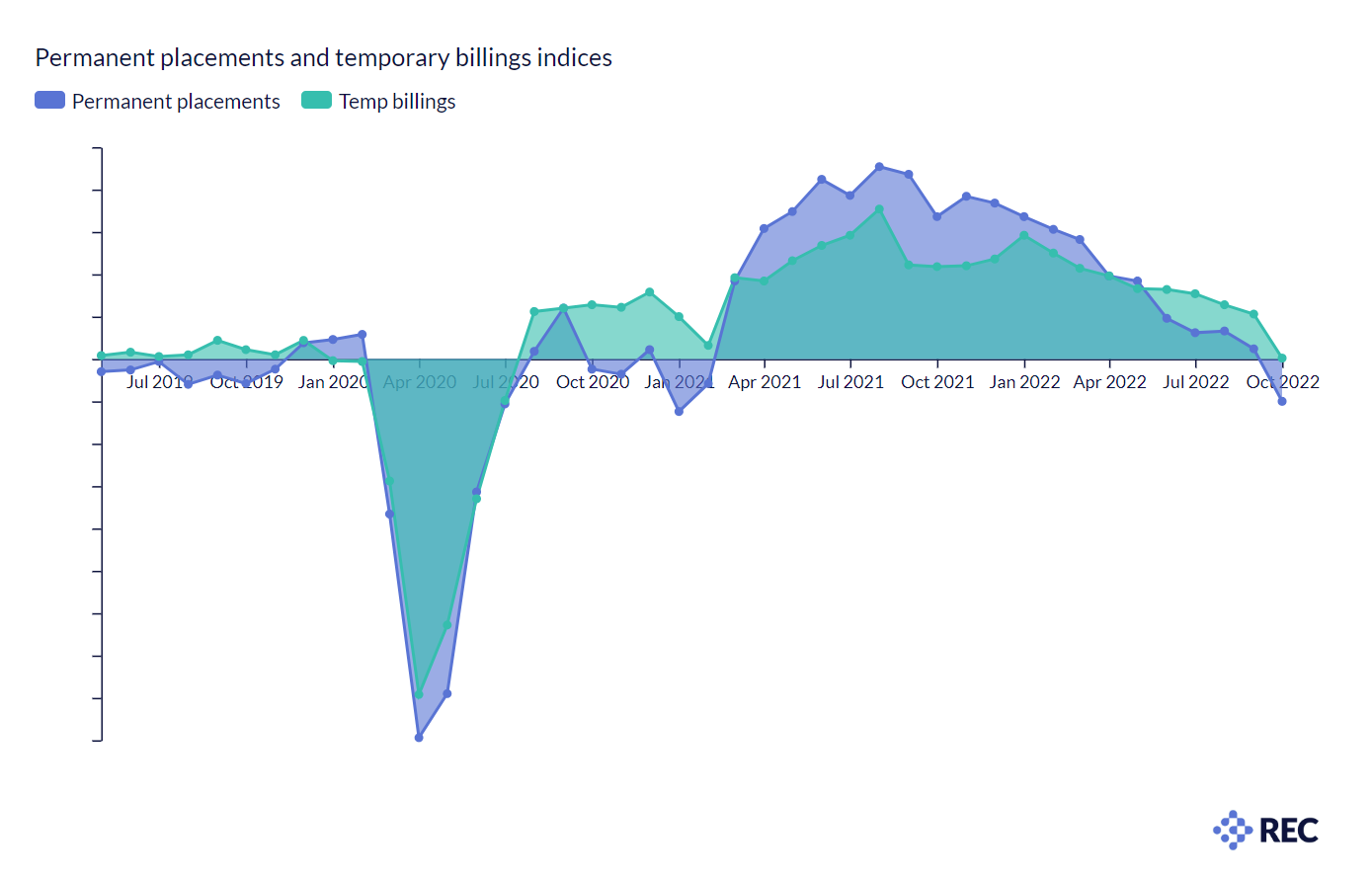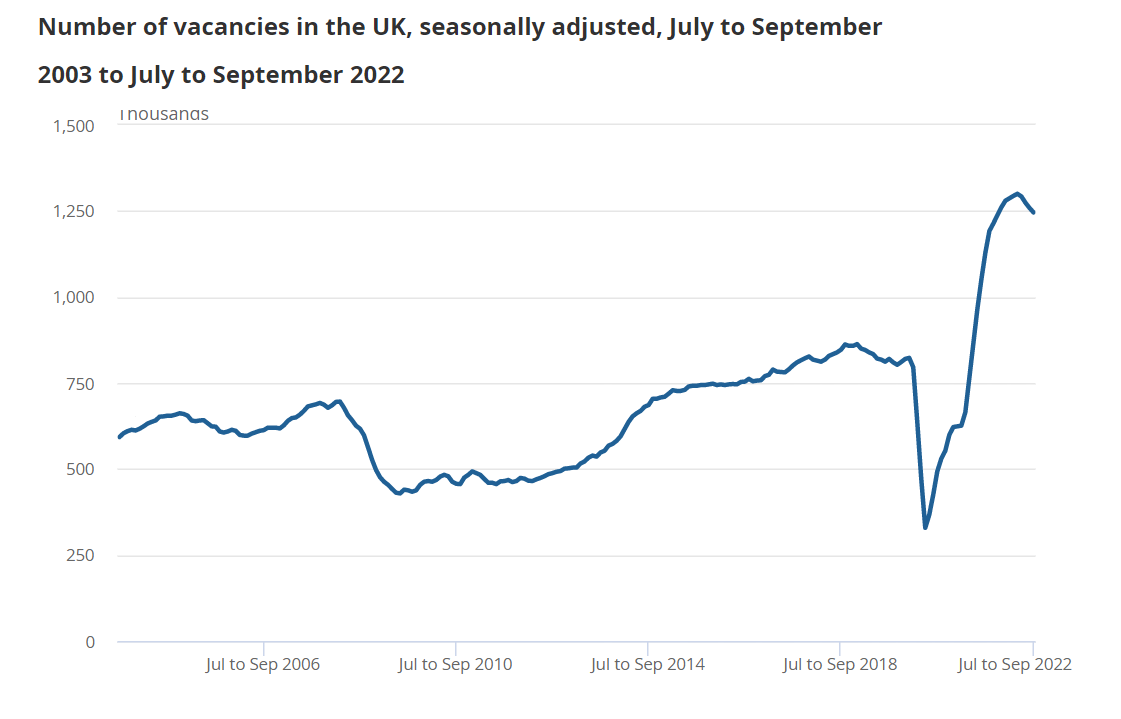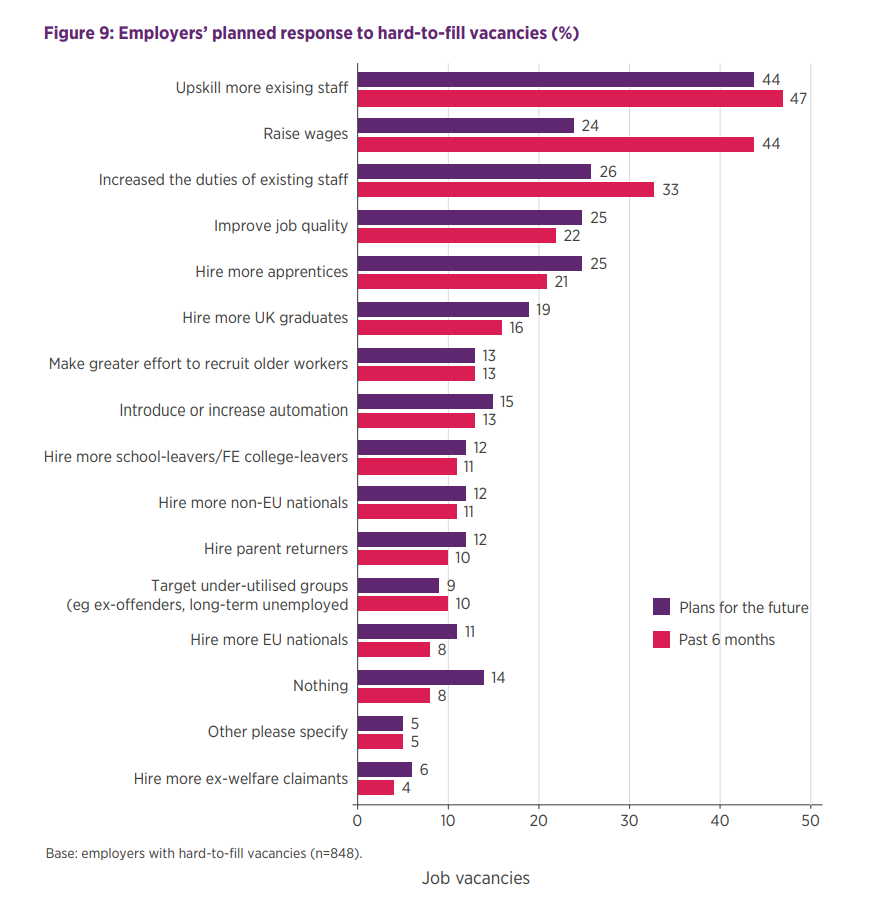
2 min
CATEGORY
BLOG
-RECRUITMENT
-PUBLISH DATE
November 29th, 2022
Quick Links
Economic uncertainty has been exacerbated by the recent political turmoil, affecting employers' confidence in making hiring decisions.
According to the latest KPMG and REC report on UK Jobs compiled by S&P Global, recruitment across the UK weakened at the start of Q4. In response to heightened uncertainty over the economy, recruiters who took part in the aforementioned survey reported a decline in permanent placements and stagnant temp billings. Additionally, both permanent and temporary job openings declined in the past week, as the permanent placement fell for the first time in 20 months.
But do not worry, there is no sign that Britain's employment market is shrinking, since labour shortages mean employers are still hiring, as evidenced by the latest permanent and temporary staff hiring data.
Back in April 2022, the Office for National Statistics reported that the number of job vacancies rose to 1,295,000, the highest it’s ever been. As of October, the number of job vacancies for the Q4 decreased by 46,000 to 1,246,000.
Although the rate of vacancy growth softened for the sixth month running, job vacancies still remain 56.6% higher than pre-pandemic levels and 10.3% above the levels of a year ago. As a result, vacancies remain high after a sustained period of positive growth. Although the market contracted recently, a historically tight labour market can be attributed to the large number of vacancies, combined with low unemployment levels. A good example of this is the recent number of employments. The recent Commons Library Research shows that the public sector employed 5.74 million people in June 2022, while private sector employment was almost five times higher with 27.01 million.
On the other hand, the long-standing issue of labour shortages continues to pose challenges for employers in search of skilled candidates as the number of job ads remain high, there is no indication that the employment market has stalled.
According to a Survey made by CIPD, 46% of recruiting employers have hard-to-fill vacancies. The top response to hard-to-fill vacancies has been to upskill existing staff (47%), followed by raising pay (44%), which is up from 29% in the previous quarter. However, fewer employers plan to raise wages in the future in response to hard-to-fill vacancies (24%).
What does that mean for the private sector? The Office for National Statistics reported that the average regular pay growth for the private sector was 6.8% including bonuses in July to September 2022, and 2.4% for the public sector including bonuses. There has never been a greater growth in the private sector or a greater difference between the private and public sectors outside of the height of the Coronavirus pandemic. You can check some of the jobs that are available at Oplu here to be one of those lucky employees.
Furthermore, anticipated pay awards have increased to a median of 5% in the private sector, the highest of any sector in the time series. The figure stands at 4% in the voluntary sector, and 3% in the public sector. So there is a good chance that you see a pay rise in your job!
Meanwhile, it is worth mentioning how important it is to identify skill gaps and address skill shortages. Providing employees with access to training and opportunities to progress in their positions helps individuals develop their skills efficiently.
According to Claire Warnes, Skills and Productivity partner at KPMG UK; « Now more than ever, it’s essential that we focus on upskilling the workforce to support and boost economic recovery when it comes. The jobs market will bounce back, particularly if we invest in the skills of the workforce across all sectors of the economy. »
The shrink in the labour force may be caused by long-term sickness, ill-health and early retirement. In addition, the employment market has undergone several changes in a relatively short period. These include Brexit, remote working, disruption to global supply chains and the COVID-19 related ailments.
Could these factors produce mismatches between the skills and locations of workers and vacancies?
Share your thoughts with us by sharing this post!


